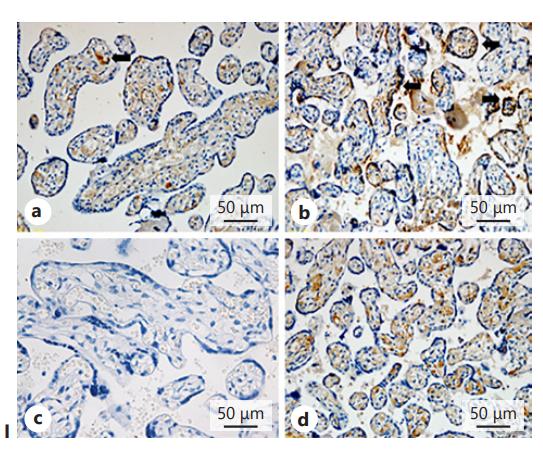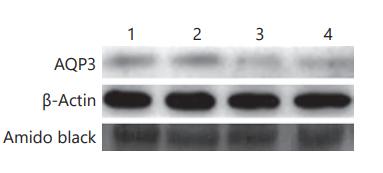AQP3 Antibody - #AF5222
| Product: | AQP3 Antibody |
| Catalog: | AF5222 |
| Description: | Rabbit polyclonal antibody to AQP3 |
| Application: | WB IHC |
| Cited expt.: | WB, IHC |
| Reactivity: | Human, Mouse, Rat |
| Prediction: | Pig, Bovine, Horse, Sheep, Rabbit, Dog, Xenopus |
| Mol.Wt.: | 31 kDa(glyco AQP3~ 45kd); 32kD(Calculated). |
| Uniprot: | Q92482 |
| RRID: | AB_2837708 |
Related Downloads
Protocols
Product Info
*The optimal dilutions should be determined by the end user. For optimal experimental results, antibody reuse is not recommended.
*Tips:
WB: For western blot detection of denatured protein samples. IHC: For immunohistochemical detection of paraffin sections (IHC-p) or frozen sections (IHC-f) of tissue samples. IF/ICC: For immunofluorescence detection of cell samples. ELISA(peptide): For ELISA detection of antigenic peptide.
Cite Format: Affinity Biosciences Cat# AF5222, RRID:AB_2837708.
Fold/Unfold
AQP 3; AQP-3; Aqp3; AQP3_HUMAN; Aquaglyceroporin-3; Aquaporin 3 (GIL blood group); Aquaporin 3 (Gill blood group); Aquaporin-3; Aquaporin3; GIL; Gill blood group;
Immunogens
A synthesized peptide derived from human AQP3, corresponding to a region within the internal amino acids.
Widely expressed in epithelial cells of kidney (collecting ducts) and airways, in keratinocytes, immature dendritic cells and erythrocytes. Isoform 2 is not detectable in erythrocytes at the protein level.
- Q92482 AQP3_HUMAN:
- Protein BLAST With
- NCBI/
- ExPASy/
- Uniprot
MGRQKELVSRCGEMLHIRYRLLRQALAECLGTLILVMFGCGSVAQVVLSRGTHGGFLTINLAFGFAVTLGILIAGQVSGAHLNPAVTFAMCFLAREPWIKLPIYTLAQTLGAFLGAGIVFGLYYDAIWHFADNQLFVSGPNGTAGIFATYPSGHLDMINGFFDQFIGTASLIVCVLAIVDPYNNPVPRGLEAFTVGLVVLVIGTSMGFNSGYAVNPARDFGPRLFTALAGWGSAVFTTGQHWWWVPIVSPLLGSIAGVFVYQLMIGCHLEQPPPSNEEENVKLAHVKHKEQI
Predictions
Score>80(red) has high confidence and is suggested to be used for WB detection. *The prediction model is mainly based on the alignment of immunogen sequences, the results are for reference only, not as the basis of quality assurance.
High(score>80) Medium(80>score>50) Low(score<50) No confidence
Research Backgrounds
Water channel required to promote glycerol permeability and water transport across cell membranes. Acts as a glycerol transporter in skin and plays an important role in regulating SC (stratum corneum) and epidermal glycerol content. Involved in skin hydration, wound healing, and tumorigenesis. Provides kidney medullary collecting duct with high permeability to water, thereby permitting water to move in the direction of an osmotic gradient. Slightly permeable to urea and may function as a water and urea exit mechanism in antidiuresis in collecting duct cells. It may play an important role in gastrointestinal tract water transport and in glycerol metabolism (By similarity).
Cell membrane>Multi-pass membrane protein. Basolateral cell membrane>Multi-pass membrane protein.
Widely expressed in epithelial cells of kidney (collecting ducts) and airways, in keratinocytes, immature dendritic cells and erythrocytes. Isoform 2 is not detectable in erythrocytes at the protein level.
Aquaporins contain two tandem repeats each containing three membrane-spanning domains and a pore-forming loop with the signature motif Asn-Pro-Ala (NPA).
Belongs to the MIP/aquaporin (TC 1.A.8) family.
Research Fields
· Organismal Systems > Excretory system > Vasopressin-regulated water reabsorption.
References
Application: WB Species: Human Sample:
Application: IF/ICC Species: Rat Sample:
Application: IHC Species: human Sample: placenta
Application: WB Species: human Sample: placenta
Restrictive clause
Affinity Biosciences tests all products strictly. Citations are provided as a resource for additional applications that have not been validated by Affinity Biosciences. Please choose the appropriate format for each application and consult Materials and Methods sections for additional details about the use of any product in these publications.
For Research Use Only.
Not for use in diagnostic or therapeutic procedures. Not for resale. Not for distribution without written consent. Affinity Biosciences will not be held responsible for patent infringement or other violations that may occur with the use of our products. Affinity Biosciences, Affinity Biosciences Logo and all other trademarks are the property of Affinity Biosciences LTD.









